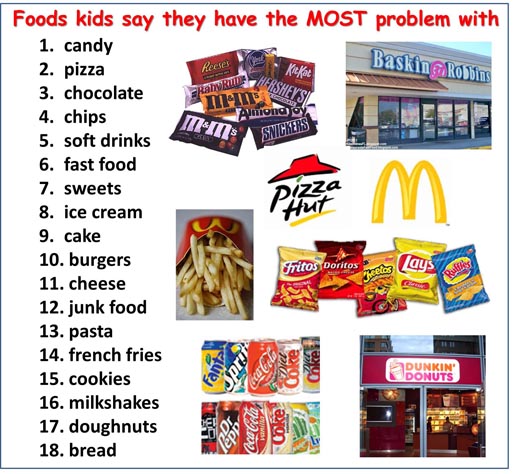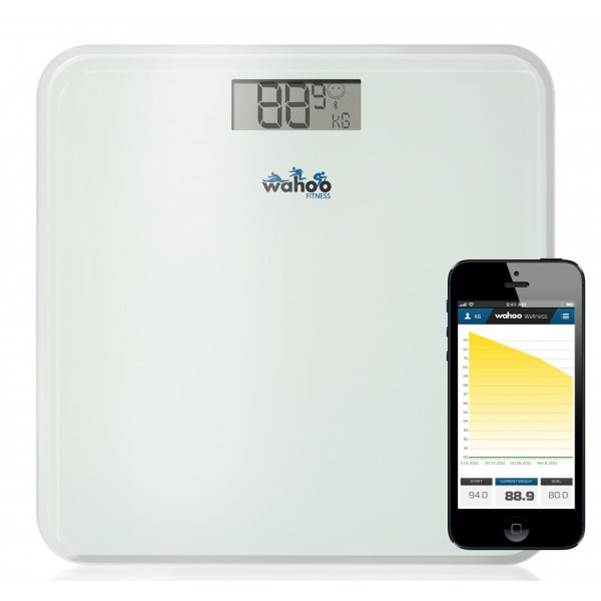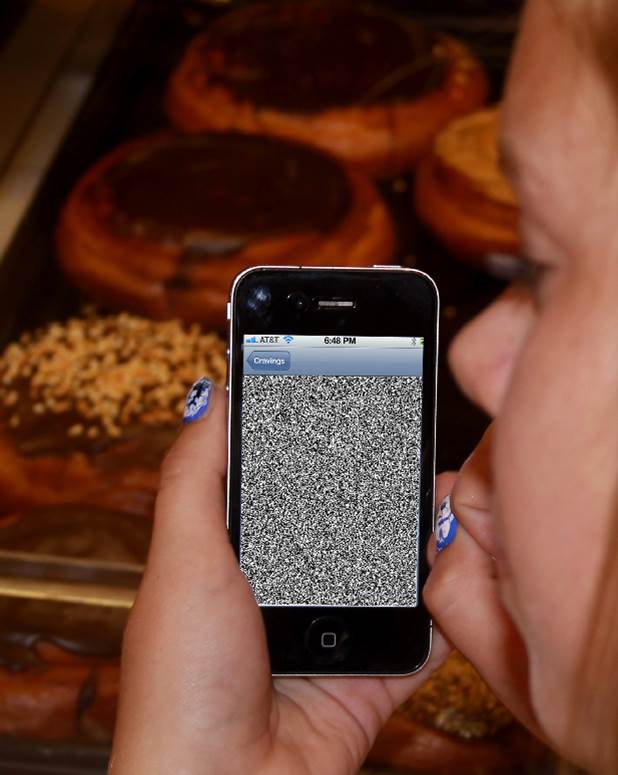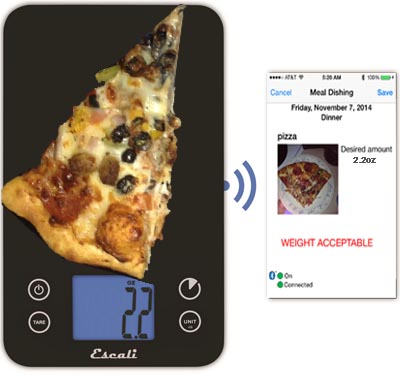|
|
|
|
The W8Loss2Go app looks at overeating like an addiction and treats it
with methods taken from addiction medicine. The app uses an
innovative approach to enable you to: 1) halt your food cravings 2) stop your urges to snack between meals, and 3) reduce your food amounts at meals, in small steps, so you don't miss the food This app does not use a diet or exercise approach, and it does not contain a calorie counter. The app focuses on staged withdrawal from: 1) problem foods, 2) snacking, and 3) excessive amounts at meals. |
|
|
Problem Foods Withdrawal  "Problem
foods" are noted by the cravings they cause, as well as not
being able to resist them when in front of you or nearby. Foods, that kids on
weigh2rock.com say they have the most problem resisting, are listed
at right. "Problem
foods" are noted by the cravings they cause, as well as not
being able to resist them when in front of you or nearby. Foods, that kids on
weigh2rock.com say they have the most problem resisting, are listed
at right.In the app, withdrawal from problem foods is accomplished by identifying and then avoiding (not eating) each food until cravings resolve or there is no longer difficulty resisting the food when it is in sight. The user lists all his/her specific problem foods in the app and withdraws from each food, one-by-one, by not eating the food, for at least 10 days or until cravings and difficulty resisting the food resolve. The next food then is withdrawn from, until all the user's problem foods have been covered. For particularly difficult problem foods like soda, if the food can not be stopped "cold turkey," the app gives tricks like diluting the soda half and half with water. This makes it easier to withdraw from the food. Successful withdrawal from problem foods may not result in significant weight loss. But, many app users have said that successful withdrawal from their problem foods gave them confidence that they could then withdraw from snacking and excessive amounts at meals. |
|
|
The user works on one or two problem foods at a time and checks in on the app daily to answer whether each problem food has been eaten or not. If the user says that the food has not been eaten, the user gets a credit. After 10 days in a row of not eating a problem food, if cravings for the food have stopped, the food is designated by the app as "In-control," and the user proceeds to withdraw from the next problem food, until he/she is in-control of all self-identified problem foods.
In our three studies
involving 127 young people, nearly all were able to successfully
withdraw from at least one problem food, and the majority were able to
withdraw from all of their problem foods.
|
|
|
Snacking Withdrawal
Snacking withdrawal is accomplished by advancing snack stoppage time intervals selected via the app -- morning, afternoon, evening, or night-time. Once the user has successfully avoided snacking during the particular time interval for 10 days in a row, the user then proceeds to stop snacking during the next time interval, with the aim of zero snacking during the entire day. Methods in the app to help curb snacking include: a) viewing gross photos or videos (e.g. draining pus) or snapping a rubber band against the wrist to quell eating urges, b) avoiding triggers (e.g. kitchen, boredom), c) relaxation (e.g. deep breaths), d) alternative behaviors (e.g. squeezing hands), e) distractions (e.g. reading), f) distress tolerance (e.g. urge surfing), and g) keeping hands busy while watching TV (e.g. drawing). Planned distractions help the user to avoid snacking. In the app distraction ideas are placed in a virtual "Distractions Jar" (below). The jar is opened (swiped) when an idea is needed in the moment to distract from a snacking urge. In our three studies involving 127 obese young people, more than 70% were able to stop snacking entirely, and the rest were able to decrease snacking frequency.
|
|
|
Withdrawal from excessive food amounts is implemented by weighing and recording in the app the typical amounts (portions) of 20-25 foods frequently served at the user's home meals, on which the user will live while doing the app program, and no other foods. The app then will reduce all input amounts of the listed foods in small increments and instruct the user, via text and voice commands, how much of each food to weigh out at meals and, if too much is taken, how much to put back. This process is referred to as "dishing." Initially, the app will reduce the user's starting amounts of all 20-25 foods by 10%. Then, the app will decrease the amounts by 0.7% every day (5% per week) until weight loss occurs. If the user's weight decreases by at least 1 pound per week, the app will hold the reduction percent at the last level. Otherwise, amounts will continue to be reduced by 0.7% per day. Decreasing portion amounts at mealtimes is helped by avoiding having extra food in sight (e.g. serving food in one room and eating it in another). Tools in the app also help, e.g. white noise, squeezing hands together, deep breaths, distractions, and gross videos.
Each time the size of
the amounts at meals is reduced by the app, the user may
miss the original amounts a bit. But, the rate of reducing
amounts is so small that the user's brain soon adjusts to this, and
the process gets easier and easier.
|
|
|
Additionally, the app syncs with the wireless Escali food scale and the wireless Wahoo body scale. These may be purchased on Amazon.com at the below links. Manual scales may also be used. |
Wahoo Bluetooth body weight scale  |

